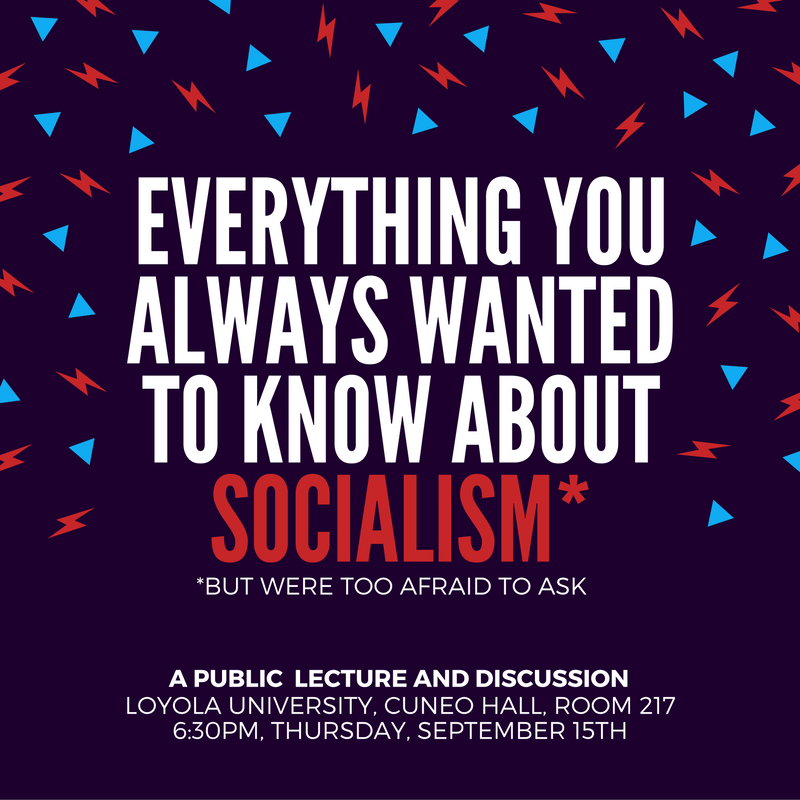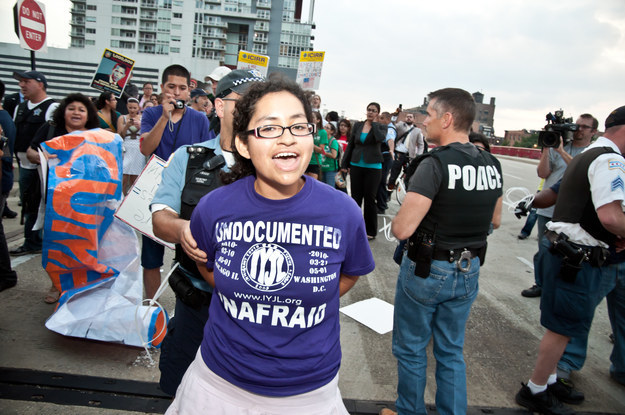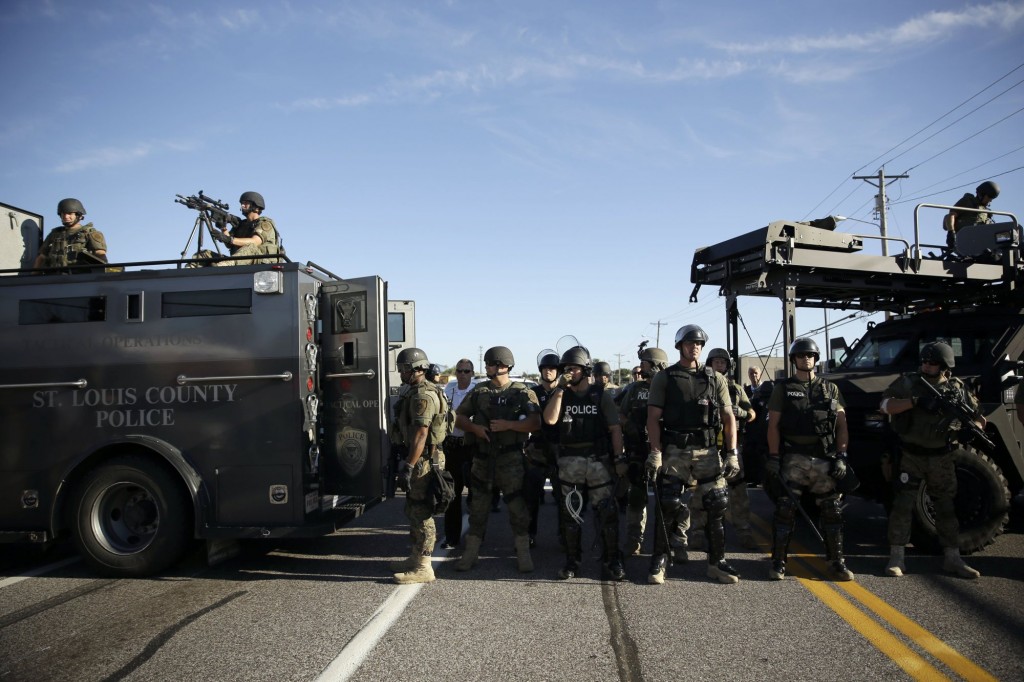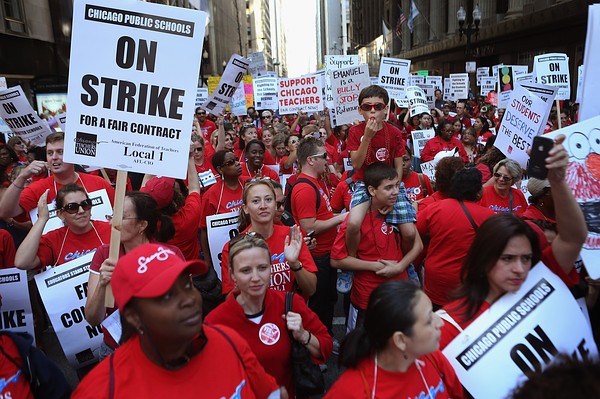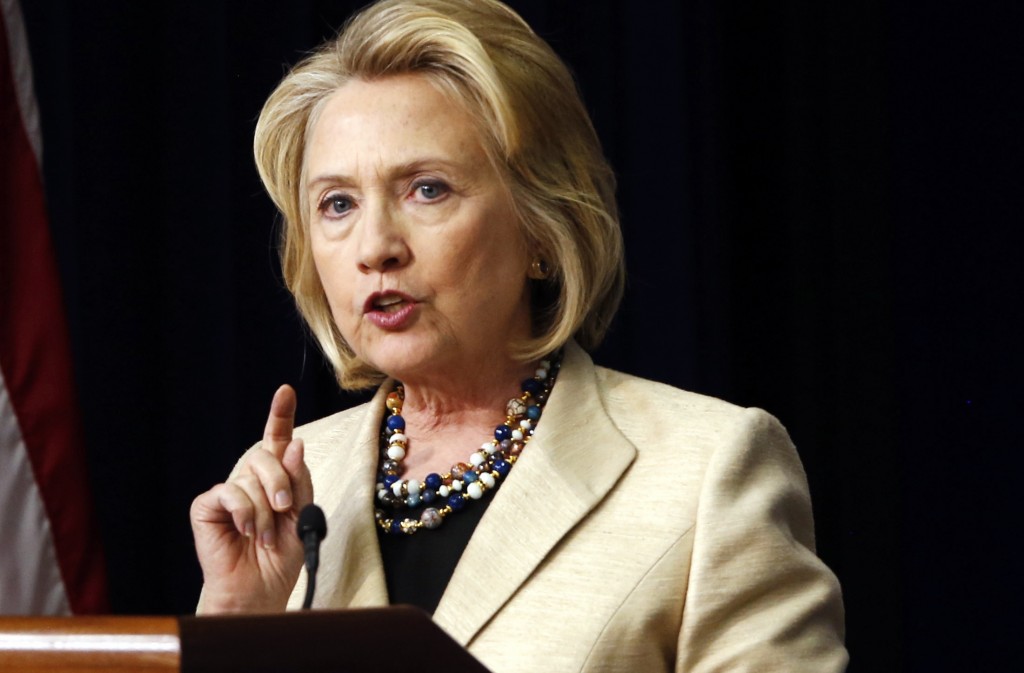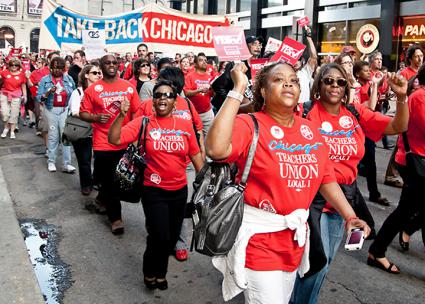
That was the scene five years ago as more than 10,000 members of the Chicago Teachers Union–wearing their signature red t-shirts–swarmed Chicago City Hall to kick off a nine-day strike. “There was a sprig of revolution in the air,” said a television reporter on the scene.
The momentum kept building. From impromptu picket-line rallies around the city greeted by honking supporters, to marches through working-class West Side and South Side neighborhoods, and another downtown protest, too, the cause of CTU teachers became that of everyone who wanted to defend public education in Chicago.
Nine days later, teachers agreed to a deal in which Chicago Mayor Rahm Emanuel dropped his main concessions demands. The CTU had won its first strike in 25 years–and organized labor scored one of its most important victories in decades.
Emanuel, who had campaigned on an explicit threat to take on the CTU, had canceled their raise after taking office in 2011 and tried to impose a longer school day without negotiations. His notorious comment to CTU President Karen Lewis in a private meeting summed up his attitude: “Fuck you, Lewis.” The mayor proceeded to use the 2012 contract talks to try to gut the union’s power.
He failed. “Mayor Rahm Emanuel had to agree to conditions that make it hard to fire some teachers who receive weak evaluations, and to limit some of the power of school principals to choose their staff,” the Wall Street Journal concluded.
Five years later, though, the CTU is facing some of the biggest battles in the union’s 80-year history.
From continued threats to pensions to the loss of membership as a result of school closings, charter school openings and declining enrollment, CTU members who defeated Emanuel in 2012 must now contend with the impact of repeated budget cuts and layoffs–as well as a right-wing Republican governor obsessed with cutting their pensions and crippling their union.
Added to this are the attacks on public school teachers everywhere, including policies pushed by Education Secretary Betsy DeVos as she attempts to convert public education into a profit machine for corporate school reformers.
Another looming threat: the Janus v. AFSCME case before the U.S. Supreme Court that could impose “right to work” policies on all public-sector unions, banning them from collecting fees from nonmembers the union is nevertheless required to represent.
– – – – – – – – – – – – – – – –
The Rise of the CORE Reformers
AS THE multipronged attack on teachers continues, it’s important to look back on the 2012 Chicago teachers strike for the lessons it provides today.
The central point is that union democracy, membership activism and community allies are essential to successful teacher union activism in this era. The strike was the culmination of efforts by the Caucus of Rank-and-File Educators (CORE)–begun years before the caucus won office–to transform a sclerotic union and tap into its fighting traditions in order to mobilize members and win public support.
The conditions that gave rise to the CTU strike took shape in 1995, when its leaders acquiesced to state legislation on “school reform” that eliminated the union’s right to bargain over issues such as class sizes–and gave then-Mayor Richard M. Daley control of the Chicago Public Schools (CPS).
The first effort at reform came in 2001, when members fed up with a corrupt and dysfunctional CTU leadership reform slate won office in 2001. But the reformer, Deborah Lynch, was undercut by holdovers from the decades-long reign of the United Progress Caucus (UPC). Lynch oversold a contract that members thought was weak–and the reformers were voted out after one term.
But once back in office, the CTU old guard in the UPC continued to bow to politicians who rolled back union rights and sliced up the school system by opening, nonunion charter schools often run by their allies. The ruling caucus split over allegations of corruption, opening the way to a CORE victory.
While CORE drew in activists from the previous CTU reform efforts, it differed from them in important ways.
Many leading CORE activists had been involved in efforts against the closure of schools, collaborating with organizations such as the Kenwood-Oakwood Community Organization (KOCO) in the predominately African American South Side neighborhoods. Others worked with grassroots Latino groups such as the Pilsen Alliance, opposing the proliferation of charter schools run by the likes of UNO, a Mexican American-oriented nonprofit with heavy clout in City Hall.
These alliances were gathered together in the Grassroots Education Movement (GEM), which held a forum against school closures in 2009 that attracted 500 people in the midst of a blizzard.
CORE linked the school closures to institutional racism–a dynamic that deeply affected the CTU membership itself, with predominately African American teachers who worked in the schools losing their jobs and unable to get a position elsewhere in the system.
Another key focus for CORE was the Chicago bankers who continued to profit on high-interest school bonds even as the Great Recession drove interest rates to record lows. Many of the figures from Chicago financial powerhouses were central players in school reform, such as David Vitale, a banker who presided over a school board handpicked by the mayor.
Meanwhile, quite a few of the school-based members and leaders of CORE were open socialists. These politics make a great difference to the type of union that was now being shaped.
After CORE had surprising success at getting two members elected as union reps on the CTU pension board, the group decided to contest the 2010 union elections.
The CORE slate was reflective of the change the group wanted to bring to the union.
At its head was Karen Lewis, an African American woman and veteran teacher with top credentials, who was adept at voicing the demands of the CTU rank and file. The vice presidential candidate was Jesse Sharkey, a longtime labor activist and socialist who had gained prominence opposing a military-run charter school located in the high school where he taught.
Michael Brunson, an African American man active around school closings, ran for the recording secretary post. Kristine Mayle, a young special education teacher who became active to save her Latino-majority school from closure, was the candidate for financial secretary.
But where the CTU old guard viewed officers as the apex of a patronage machine to run the union and herd the membership, CORE saw the elections as an opportunity to advocate for a member-driven union, in which those in elected positions–from school delegates to the officers–would be committed to rank-and-file activism and accountable to members.
Thus, most of the CORE candidates for the union’s big executive board–a rubber stamp under the old guard–were already steeped in activism at their own schools or part of the wider fight to defend public education in Chicago.
Jackson Potter, a founder of CORE who was originally the caucus vice presidential candidate until the old guard challenged his eligibility on a technicality, summed up the approach this way: “We’re not going to do it for you, we’re doing to do it with you.”
The Chicago establishment was bemused by the CTU’s internal struggles. The notion of a militant, democratic union taking on City Hall seemed like nostalgia for Chicago’s storied labor wars rather than a serious threat. “The bosses downtown are rooting for the rookies to get them to a bargaining table and eat them alive,” wrote veteran TV news anchorman Walter Jacobson.
– – – – – – – – – – – – – – – –
The Road to the 2012 Strike
After its surprise victory in the spring of 2010, the CORE leadership launched a new organizing department and revamped the field representative system. A key part of the effort was to revive the union’s tradition of school delegates as the front line for contract enforcement.
A research department was also added, which was responsible for a groundbreaking union white paper, The Schools Chicago’s Students Deserve, which advocated for fair education funding, equitable distribution of resources, workers’ job protections, union solidarity, community outreach and support of social services, all as related and interdependent.
There was a bit of breathing space as a result of the long transition at City Hall after Mayor Daley announced he wouldn’t seek reelection in 2010, all but handing the office over to Rahm Emanuel.
Emanuel was a former operative in Bill Clinton’s White House, who had gone on to Congress after becoming a multimillionaire during a brief stint as an investment banker. He didn’t break a sweat in his 2011 run for mayor, but used the opportunity to spell out his agenda for “education reform”–which meant steamrollering the CTU.
Weeks before he formally took office, Emanuel orchestrated the passage of state school “reform” legislation–Senate Bill 7, which, among other things, requires the CTU to get a “yes” vote from 75 percent of all members to vote to authorize a strike.
Emanuel and his CPS chief, Jean-Claude Brizard, wasted no time in challenging the new CTU leadership, canceling a scheduled raise and attempting–unsuccessfully–to impose a longer school day without negotiation.
CTU members who had perhaps voted for CORE mainly to oust the old guard now realized that the new leadership was right: This was class warfare, and the union had better get ready to fight.
The summer of 2012 saw the CTU move into high gear, with an endless series of meetings and trainings. The Chicago Teachers Solidarity Campaign formed–in part as an outgrowth of the Chicago Occupy movement that had emerged a few months earlier.
The Occupy movement, with its focus on the 99 Percent vs. the 1 Percent, had enabled the CTU’s message to resonate with a new generation of activists less familiar with union issues. Plus, Occupy had emboldened a renewed open socialist presence in the unions in Chicago and beyond.
While the union prepared for a ground war, Karen Lewis provided air cover by countering Emanuel’s threats one after another on TV and print media. At a time when most labor leaders and politicians were knuckling under to the mayor or avoiding confrontation, Lewis and the CTU took a stand.
Still, the pundits scoffed at the CTU’s ability to strike. Unions in Chicago had long since been tamed, hadn’t they? Anyone close to the action could see that a showdown was inevitable. But Rahm Emanuel, taken in by his own tough-guy hype, didn’t see it coming.
Socialist Worker’s Alan Maass described the scene on the first day of the strike:
For anyone walking, biking or driving around the city on Monday morning, the message that came through loud and clear was from the proud picketers to be found every several blocks at the more than 600 schools where the CTU is on strike.
Teachers talked about the issues in their struggle with a sense of sober anger, reflecting the high stakes of this struggle. But there was also pride, energy and enthusiasm now that they were finally able to make their stand–especially after so many months of being the target of Emanuel’s sneers and smears.
– – – – – – – – – – – – – – – –
The Rahmpire Strikes Back
THE CTU strike had an impact in the labor movement across the U.S., and for good reason.
At a time when strikes were at a record low–and those that did take place were often provoked by bosses confident of victory–the Chicago teachers showed it was possible to take to the picket line and win. They prevailed, moreover, against Emanuel, a high-powered political adversary and nationally renown proponent of business-friendly school “reform.”
Not surprisingly, in the aftermath of the strike, the CTU became a focal point for teacher union reformers around the U.S., and helped establish a network that became known as UCORE.
Activists from that networks were important in a series of struggles, such as the Seattle teachers strike of 2015 and a revived reform grouping that won election in United Teachers Los Angeles. Official rhetoric in the CTU’s parent union, the American Federation of Teachers, and the larger National Education Association shifted somewhat to the left on issues of school “reform,” as well as race and class issues in public education.
Nevertheless, the CTU strike, while it helped spark teachers strikes in Chicago suburbs, did not signal decisive shift in the level of class struggle locally or nationally.
Strike levels remained at historically low levels as private-sector unions were pressed hard by industrial restructuring and public-sector unions faced the pressures of enormous public debt that resulted from the Great Recession. Anti-union legislation continued to advance, including the once-unthinkable imposition of right-to-work laws in Michigan, long a labor stronghold.
All this has added to the pressures on the CTU leadership. CORE officers now faced the same challenges that have dogged other union reformers who won office in recent decades: working to restore competence to ineffectual institutions without becoming bureaucratic and risk-averse.
Emanuel calculated that he could use these conditions to his advantage against the CTU without targeting the union contract directly. Just months after the strike settled, he announced some 50 school closures in predominately African American neighborhoods.
The union, legally barred from striking over such issues, launched a political campaign that linked up with parent and community activists. In this atmosphere, the CORE slate was re-elected against a weak old guard opposition.
Despite inspiring protests and long marches in the springtime heat, Emanuel succeeded in dealing a major blow to public education with his mass closures. It was a costly victory for him. Emanuel’s approval ratings started to slide, both because of the CTU’s continued challenges, but also the mayor’s wider failure to address the pressing needs of working people in Chicago.
But Chicago’s schoolchildren and the CTU had taken a blow as well.
The union’s turn toward electoralism was in part a reaction to being ineffective in stopping the school closings. It was in his context that CTU began to pour more resources into Democratic Party politics. While CORE’s platform was left wing, it did not address the issue of the CTU’s support for the Democratic Party.
The union endorsed incumbent Democratic Gov. Pat Quinn in the 2014 election despite Quinn’s anti-union policies and his choice of Paul Vallas, the former Chicago schools CEO who engineered the union-bashing 1990s school reform plans, as a running mate.
In the event, Quinn was defeated by the right-wing near-billionaire, Republican Bruce Rauner.
Next came an effort to defeat Emanuel in his 2015 re-election effort. Karen Lewis herself began preparing to run against him until she was sidelined by a serious illness. The union then turned to a veteran politician, Jesus “Chuy” García, a onetime liberal state legislator who had become a member of the executive board of Cook County, which includes Chicago.
García’s supporters compared his campaign to that of Harold Washington, the city’s first African American mayor who won office in 1983. But García, a Washington ally, had come to back austerity measures that cut social spending as a member of the Cook County Board.
Lewis’s suggestion for CTU members to run themselves even when she could not encouraged several teachers to run for alderman positions–some as independents, some as Democrats. Sue Garza, a CTU stalwart and daughter of left-wing United Steelworkers leader Ed Sadlowski, won election as s Democrat in the city’s old steelmaking neighborhood. But the union’s main focus was on the mayor’s race.
García managed to force Emanuel into a humiliating runoff election. Yet by keeping the political debate centered on the supposed necessity for austerity, García undercut the CTU’s tax-the-rich message that had gotten traction during the 2012 strike. Instead of promising to deliver for the CTU and the rest of organized labor, he vowed to squeeze them.
“I’m going tell the unions a lot of bad news because the situation is so dire,” García said in a campaign debate with Emanuel. “Who’s going to be upset? Probably the unions who are supporting me now.”
If the CTU leaders who advocated for García had hoped his campaign would at least shift the political debate in the union’s direction, they were wrong. Instead, they had poured enormous resources into a candidate who, while more liberal then Emanuel, was a defender of the austerity status quo. And this took resources away from the kind of base-building and organizing that had made the 2012 strike victory possible.
– – – – – – – – – – – – – – – –
Facing Enemies in City Hall and Springfield
Emanuel won the election, but his air of invincibility was gone. His popularity plummeted a few months later following the November 2015 release of a video showing the police killing of an unarmed Black youth, Laquan McDonald. The CTU shifted back toward grassroots activism, endorsing and building protests against racist police violence that followed.
The CTU’s community alliances–and its focus on economic and racial justice–was on display a few months later when, on April 1, 2016, the union called a one-day strike despite CPS claims that the walkout was illegal. The action mobilized teachers to pressure CPS to drop its threats of budget cuts and to defend their pensions from attacks by Gov. Rauner.
The April 1 strike had an energy and dynamism that recalled the 2012 strike. But this time, the battle went well beyond the CTU’s particular issues. The union challenged Rauner in alliance with a range of unions, student groups, community organizations and left-wing activists who were opposing the governor’s refusal to fund basic social services by engineering a budget impasse.
The downtown rally that followed the strike action also highlighted the issue of police killings and racism, with a controversial anti-police comment from a Black Lives Matter protester. That linkage was criticized by some CTU members.
But highlighting the fight against racism was in keeping with CORE’s original perspective–that the CTU could not win simply through trade union bargaining, but had to be part of a wider social movement that mobilized working people.
The April 1 strike highlighted that potential by mobilizing 20,000 people in the streets, and striking school members held pickets in the morning and joined supporting actions at Chicago State University and at Nabisco, where workers were fighting a plant closing.
The triennial CTU elections had been scheduled for soon after the strike–but they were canceled because no opposition emerged to challenge the CORE slate.
Notably, Mayor Emanuel kept fairly quiet about the April 1 strike. Having lost substantial support among African American voters, he wasn’t eager for another high-profile confrontation.
He left the dirty work to schools CEO Forrest Claypool, a longtime political operative with no education background but a long record of inflicting pain on unions in the Chicago Transit Authority and Chicago Park District.
Claypool sought to undermine the contract won in 2012 at every opportunity. Union members suffered pay cuts in the form of furlough days while CPS effectively imposed a pay freeze. The schools CEO stonewalled on any serious contract negotiations, using the law to drag out the timeline for a legal CTU strike and forcing the union to work under an extension of the old deal for more than a year.
By September 2016, the CTU was gearing up for another strike, with a series of organizing meetings, a high-profile community support rally and thousands of picket signs prepared. The April 1 one-day strike had showed that if the CTU walked out again, the political context might be much less favorable for the mayor.
In the end, Emanuel blinked one year ago, pulling the concessions demands that had provoked the strike threat off the table at the last minute, in an offer calculated to concede just enough to avoid a repeat of 2012.
While the agreement fell short of what the union had demanded, the union had forced Emanuel to scour the city budget for more money for schools–something that had seemed unlikely going into the preparatory hours before a walkout. A majority of bargaining committee voted to accept the deal, averting a strike, and propose it to delegates for approval.
In the deal, Emanuel dropped his effort to eliminate automatic pay raises based on seniority and education–known as steps and lanes–and agreed to pay increases rather the effective pay cuts he’d demanded through a change in pension formulas. The union also won a longer period for teachers displaced through school closings to be rehired. After a series of sharp debates, delegates sent the agreement to the rank and file.
– – – – – – – – – – – – – – – –
Applying the Lessons of 2012
SINCE THE 2016 contract was signed, the CTU has been in trench warfare with Emanuel and CPS. Layoffs are chronic, cuts unending and school closings will soon be announced.
Yet Rauner’s hostility to the CTU is so intense and brazen that the mayor can–almost–seem like the good cop to the governor’s bad cop. While a legislative deal to enact a budget, passed over Rauner’s veto, will provide some relief for Chicago schools, separate legislation supported by the governor ties school funding to the introduction of voucher systems that would funnel tax money to religious and other private schools.
In this atmosphere, an opposition to the CTU leadership has developed in the form of the Members First caucus, which argues that the union’s focus on social justice issues has undermined its ability to deliver for teachers. This caucus is counting on cynicism and defeatism among members to build support for a more traditional bread-and-butter unionism.
CORE itself has been in the midst of an ongoing debate on various issues, from how to carry out contract enforcement to political strategy. And the CTU itself faces difficult choices on its budgets as the result of membership losses through school closings.
But as the CTU nears its 80th anniversary, it is important to remember that Chicago teachers have struggled through far more difficult challenges. It took four decades to create a unified union in 1937 in the midst of intense mobilization, during which teachers were paid in scrip as the schools were effectively bankrupt.
It was another three decades before the union had its first strike. It was no accident that this initial strike was a wildcat action by African American teachers radicalized by the Black Power movement and the Black school boycotts a few years earlier.
The influx of Black teachers into the union was a key factor in the CTU’s militancy, seen in nine strikes in 18 years in the 1970s and 1980s over budget cuts, payless paydays and other outrages.
The contribution of CORE and the 2012 strike–along with the one-day strike of 2016–was to revive that fighting tradition, while shedding the old guard’s business unionism. Some of the work is often slow-going, but crucial, like the CTU’s support for organizing charter school teachers and the proposed merger with their union.
Historically, Chicago teachers have won their biggest gains with the support of the wider working class in the city. The necessary day-to-day tasks of keeping the union effective in the schools–a sometimes thankless and frustrating effort–must be linked to a broader social movement and political strategy, independent of the Democrats, to revive organized labor. The role of the left from a variety of traditions has been critical in the CTU’s effort to revive as a fighting organization.
“We have borne some losses, but we were the counter to corporate education reform and the attempt to reduce social services, fighting the billionaires for the stability that all of us deserve,” said teacher and CTU executive board member Kimberly Goldbaum, noting that she and other socialists and radicals have continued to focus on those issues.
Today, facing not just Emanuel and Rauner but also the Trump administration, it will be more necessary than ever for the CTU–and all unions, for that matter–to anchor themselves in broader working class struggles.
The right is attempting to roll back decades of social progress. While Democrats like Emanuel may oppose some of that agenda, employers will not hesitate to use the anti-union onslaught to their own benefit.
The 2012 CTU strike showed how to fight back. It remains a model today.


